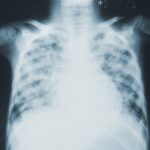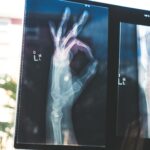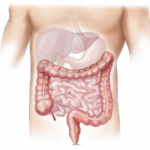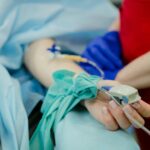 Interest in drug development for rare diseases has expanded dramatically since the Orphan Drug Act was passed in 1983, with 40% of new drug approvals in 2019 targeting orphan indications. However, limited quantitative understanding of natural history and disease progression hinders progress and increases the risks associated with rare disease drug development. Use of international data standards can assist in data harmonization and enable data exchange, integration into larger datasets, and a quantitative understanding of disease natural history. The US Food and Drug Administration (FDA) requires the use of Clinical Data Interchange Consortium (CDISC) Standards in new drug submissions to help the agency efficiently and effectively receive, process, review, and archive submissions, as well as to help integrate data to answer research questions. Such databases have been at the core of biomarker qualification efforts and fit-for-purpose models endorsed by the regulators. We describe the development of CDISC therapeutic area user guides for Duchenne muscular dystrophy and Huntington’s disease through Critical Path Institute consortia. These guides describe formalized data structures and controlled terminology to map and integrate data from different sources. This will result in increased standardization of data collection and allow integration and comparison of data from multiple studies. Integration of multiple data sets enables a quantitative understanding of disease progression, which can help overcome common challenges in clinical trial design in these and other rare diseases. Ultimately, clinical data standardization will lead to a faster path to regulatory approval of urgently needed new therapies for patients. For more information click here.
Interest in drug development for rare diseases has expanded dramatically since the Orphan Drug Act was passed in 1983, with 40% of new drug approvals in 2019 targeting orphan indications. However, limited quantitative understanding of natural history and disease progression hinders progress and increases the risks associated with rare disease drug development. Use of international data standards can assist in data harmonization and enable data exchange, integration into larger datasets, and a quantitative understanding of disease natural history. The US Food and Drug Administration (FDA) requires the use of Clinical Data Interchange Consortium (CDISC) Standards in new drug submissions to help the agency efficiently and effectively receive, process, review, and archive submissions, as well as to help integrate data to answer research questions. Such databases have been at the core of biomarker qualification efforts and fit-for-purpose models endorsed by the regulators. We describe the development of CDISC therapeutic area user guides for Duchenne muscular dystrophy and Huntington’s disease through Critical Path Institute consortia. These guides describe formalized data structures and controlled terminology to map and integrate data from different sources. This will result in increased standardization of data collection and allow integration and comparison of data from multiple studies. Integration of multiple data sets enables a quantitative understanding of disease progression, which can help overcome common challenges in clinical trial design in these and other rare diseases. Ultimately, clinical data standardization will lead to a faster path to regulatory approval of urgently needed new therapies for patients. For more information click here.
Publications
 Оn October 3 from 16:00 to 19:30 will be held the online event of World Alliance of Pituitary Organizations (WAPO), of which the Pituitary Association is a member. The event will be translated in Russian and English. Registration is free. For more information click here.
Оn October 3 from 16:00 to 19:30 will be held the online event of World Alliance of Pituitary Organizations (WAPO), of which the Pituitary Association is a member. The event will be translated in Russian and English. Registration is free. For more information click here.
Clinical, electrophysiological and genetic characteristics of childhood hereditary polyneuropathies
 Hereditary polyneuropathies are heterogeneous group of diseases of the peripheral nervous system. In this study, we investigated the demographic, clinical, electrophysiological, and genetic characteristics of hereditary polyneuropathy patients diagnosed and followed up in our tertiary center clinic in Izmir, Turkey. Patients who were diagnosed with hereditary polyneuropathies during nerve conduction studies in our center were evaluated retrospectively. In a total of 1484 nerve conduction studies, 207 patients were diagnosed with polyneuropathy. Ninety-nine of those patients were determined to have hereditary polyneuropathy, 52 of which were male and 47 were female. Sixty-nine patients with hereditary polyneuropathy were compatible with axonal and 30 were compatible with demyelinating polyneuropathy. Genetic analysis was performed in 69 patients, and 49 of those patients were genetically diagnosed, leading to a diagnosis rate of 71%.Advances in genetics have led to an increase in the heterogeneity of hereditary polyneuropathies, causing difficulties in the use of existing classifications. Although typical mutations expected in childhood-onset polyneuropathies are seen less frequently, polyneuropathies are frequently encountered as findings of complex, multisystemic diseases. For more information click here.
Hereditary polyneuropathies are heterogeneous group of diseases of the peripheral nervous system. In this study, we investigated the demographic, clinical, electrophysiological, and genetic characteristics of hereditary polyneuropathy patients diagnosed and followed up in our tertiary center clinic in Izmir, Turkey. Patients who were diagnosed with hereditary polyneuropathies during nerve conduction studies in our center were evaluated retrospectively. In a total of 1484 nerve conduction studies, 207 patients were diagnosed with polyneuropathy. Ninety-nine of those patients were determined to have hereditary polyneuropathy, 52 of which were male and 47 were female. Sixty-nine patients with hereditary polyneuropathy were compatible with axonal and 30 were compatible with demyelinating polyneuropathy. Genetic analysis was performed in 69 patients, and 49 of those patients were genetically diagnosed, leading to a diagnosis rate of 71%.Advances in genetics have led to an increase in the heterogeneity of hereditary polyneuropathies, causing difficulties in the use of existing classifications. Although typical mutations expected in childhood-onset polyneuropathies are seen less frequently, polyneuropathies are frequently encountered as findings of complex, multisystemic diseases. For more information click here.
 Sarcoidosis is a granulomatous systemic disease of unknown cause where the lung is the most frequently affected organ. Therapeutic management of the disease is challenging as clinical presentation and prognosis are very heterogeneous. In the present review, we will summarize the main advances in sarcoidosis therapy. Current sarcoidosis therapies are categorized in three lines: glucocorticoids (first line), immunosuppressants (second line), and biologics (third line). Recent glucocorticoid studies have reported that efficacy could be similar with high and low doses, but with an increase in side effects with higher doses. In immunosuppressants, recent publications in mycophenolate and repository corticotropin injection (RCI) have added more information in their use and efficacy. Finally, new evidence has been published in the use of antitumor necrosis factor (anti-TNFα) agents in refractory cardiac sarcoidosis and neurosarcoidosis. For more information click here.
Sarcoidosis is a granulomatous systemic disease of unknown cause where the lung is the most frequently affected organ. Therapeutic management of the disease is challenging as clinical presentation and prognosis are very heterogeneous. In the present review, we will summarize the main advances in sarcoidosis therapy. Current sarcoidosis therapies are categorized in three lines: glucocorticoids (first line), immunosuppressants (second line), and biologics (third line). Recent glucocorticoid studies have reported that efficacy could be similar with high and low doses, but with an increase in side effects with higher doses. In immunosuppressants, recent publications in mycophenolate and repository corticotropin injection (RCI) have added more information in their use and efficacy. Finally, new evidence has been published in the use of antitumor necrosis factor (anti-TNFα) agents in refractory cardiac sarcoidosis and neurosarcoidosis. For more information click here.
 Our goal is to contribute both improving the care and life of people with rare diseases, and the quality of our work. We invite all participants in the XI National Conference for Rare Diseases and Orphan Drugs to share their impressions by filling out a short survey. Its purpose is to comprehend the point of view and opinion about the conference. Thank you for your cooperation!
Our goal is to contribute both improving the care and life of people with rare diseases, and the quality of our work. We invite all participants in the XI National Conference for Rare Diseases and Orphan Drugs to share their impressions by filling out a short survey. Its purpose is to comprehend the point of view and opinion about the conference. Thank you for your cooperation!
 This report describes a new strategy for the care of patients with osteogenesis imperfecta, based on an interdisciplinary team working. Thereby, we aim at fulfilling three main goals: offering thorough coordinated management for all, and improving physical activity and quality of life of the patients. With rare diseases such as osteogenesis imperfecta (OI), patients and their family often suffer from inadequate recognition of their disease, poor care coordination and incomplete information. A coordinated interdisciplinary approach is one possible solution for providing both comprehensive and cost-effective care, with benefits for patient satisfaction. Poor physical activity and impaired quality of life represent a considerable burden for these patients. To better address these issues, in 2012 we created an interdisciplinary team for the management of OI patients in our University Hospital Centre (CHUV, Lausanne University Hospital,). In this article we describe the implementation of this interdisciplinary care strategy for patients suffering from OI, and its impact on their physical activity and quality of life. For more information click here.
This report describes a new strategy for the care of patients with osteogenesis imperfecta, based on an interdisciplinary team working. Thereby, we aim at fulfilling three main goals: offering thorough coordinated management for all, and improving physical activity and quality of life of the patients. With rare diseases such as osteogenesis imperfecta (OI), patients and their family often suffer from inadequate recognition of their disease, poor care coordination and incomplete information. A coordinated interdisciplinary approach is one possible solution for providing both comprehensive and cost-effective care, with benefits for patient satisfaction. Poor physical activity and impaired quality of life represent a considerable burden for these patients. To better address these issues, in 2012 we created an interdisciplinary team for the management of OI patients in our University Hospital Centre (CHUV, Lausanne University Hospital,). In this article we describe the implementation of this interdisciplinary care strategy for patients suffering from OI, and its impact on their physical activity and quality of life. For more information click here.
 Short bowel syndrome (SBS) is a rare disease that results from extensive resection of the intestine. When the remaining absorption surface of the intestine cannot absorb enough macronutrients, micronutrients, and water, SBS results in intestinal failure (IF). Patients with SBS who suffer from IF require parenteral nutrition for survival, but long-term parenteral nutrition may lead to complications such as catheter sepsis and metabolic diseases. Spontaneous intestinal adaptation occurs weeks to months after resection, resulting in hyperplasia of the remnant gut, modification of gut hormone levels, dysbiosis, and hyperphagia. Oral nutrition and presence of the colon are two major positive drivers for this adaptation. This review aims to summarize the current knowledge of the mechanisms underlying spontaneous intestinal adaptation, particularly in response to modifications of luminal content, including nutrients. In the future, dietary manipulations could be used to treat SBS. For more information click here.
Short bowel syndrome (SBS) is a rare disease that results from extensive resection of the intestine. When the remaining absorption surface of the intestine cannot absorb enough macronutrients, micronutrients, and water, SBS results in intestinal failure (IF). Patients with SBS who suffer from IF require parenteral nutrition for survival, but long-term parenteral nutrition may lead to complications such as catheter sepsis and metabolic diseases. Spontaneous intestinal adaptation occurs weeks to months after resection, resulting in hyperplasia of the remnant gut, modification of gut hormone levels, dysbiosis, and hyperphagia. Oral nutrition and presence of the colon are two major positive drivers for this adaptation. This review aims to summarize the current knowledge of the mechanisms underlying spontaneous intestinal adaptation, particularly in response to modifications of luminal content, including nutrients. In the future, dietary manipulations could be used to treat SBS. For more information click here.
 Contact person:
Contact person:
Monika Milkova Marinova
Mobile phone:
0885 44 00 19
Postal Address:
2 Sredna Gora Str.,
6008 Stara Zagora
Email:
marinova_tarlov@abv.bg
Facebook group – closed (intended for patients) “Tarlov Perineural Cysts Group Bulgaria ”- the membership is approved after an MRI is presented.
Facebook page of the association – Association of Tarlov Patients in Bulgaria – Treatment without
borders
Governing body:
Monika Milkova Marinova – president
Zhenya Angelova Stoencheva – member
Rositsa Mincheva Mincheva-Naneva – member
Aims of the association:
Protecting the rights of people with rare diseases, including those suffering from Perineural Tarlov Cysts;
Supporting, pooling, promoting and informing people with Perineural Tarlov Cysts and their adaptation to society;
Supporting the professional development and qualification of researchers and physicians in the field related to the prevention, diagnosis, treatment and rehabilitation of Tarlov’s perineural cysts;
Introducing the society to the features of the disease, the prevention, diagnosis, treatment and rehabilitation of Perineural Tarlov Cysts, with the physiological and the psychological consequences of it;
Promotion, support and development of research for Tarlov’s perineural cysts abroad;
Establishing contacts with similar organizations abroad;
Making contacts and dialogue between the association and the bodies and organizations in regional and global level, related to rare diseases, including Tarlov’s perineural cysts;
Taking measures to overcome the emotional consequences of the illness;
Vocational retraining and social rehabilitation of people with rare diseases, including those suffering from Perineural Tarlov Cysts;
Providing funds for the treatment and support of patients with perineural Tarlov cysts.
 Thalassemia is characterized by a defect in the synthesis of one or more of the globin subunits of hemoglobin. This defect results in imbalance in the α/β-globin chain ratio, ineffective erythropoiesis, chronic hemolytic anemia, and iron overload. With advances in diagnosis, treatment, and transfusion support, the prognosis of patients with thalassemia has improved over the past few decades. An increasing number of patients with thalassemia is living with long-term complications, including cardiomyopathy, chronic liver disease, endocrinopathy, and infections. In this paper, we review common complications that bring the patient with thalassemia to urgent or emergent medical attention. We also discuss the aspects of emergency care that are most relevant while caring for the patient with thalassemia in the emergency department. For more information click here.
Thalassemia is characterized by a defect in the synthesis of one or more of the globin subunits of hemoglobin. This defect results in imbalance in the α/β-globin chain ratio, ineffective erythropoiesis, chronic hemolytic anemia, and iron overload. With advances in diagnosis, treatment, and transfusion support, the prognosis of patients with thalassemia has improved over the past few decades. An increasing number of patients with thalassemia is living with long-term complications, including cardiomyopathy, chronic liver disease, endocrinopathy, and infections. In this paper, we review common complications that bring the patient with thalassemia to urgent or emergent medical attention. We also discuss the aspects of emergency care that are most relevant while caring for the patient with thalassemia in the emergency department. For more information click here.
 To coordinate care effectively for rare conditions, we need to understand what coordinated care means. This review aimed to define coordinated care and identify components of coordinated care within the context of rare diseases; by drawing on evidence from chronic conditions. A systematic scoping review. We included reviews that reported or defined and outlined components of coordinated care for chronic or rare conditions. Thematic analysis was used to develop a definition and identify components or care coordination. Stakeholder consultations (three focus groups with patients, carers and healthcare professionals with experience of rare conditions) were held to further explore the relevance of review findings for rare conditions. Coordinated care is multi-faceted and has both generic and context-specific components. Findings outline many ways in which care may be coordinated for both rare and common chronic conditions. Findings can help to develop and eventually test different ways of coordinating care for people with rare and common chronic conditions. For more information click here.
To coordinate care effectively for rare conditions, we need to understand what coordinated care means. This review aimed to define coordinated care and identify components of coordinated care within the context of rare diseases; by drawing on evidence from chronic conditions. A systematic scoping review. We included reviews that reported or defined and outlined components of coordinated care for chronic or rare conditions. Thematic analysis was used to develop a definition and identify components or care coordination. Stakeholder consultations (three focus groups with patients, carers and healthcare professionals with experience of rare conditions) were held to further explore the relevance of review findings for rare conditions. Coordinated care is multi-faceted and has both generic and context-specific components. Findings outline many ways in which care may be coordinated for both rare and common chronic conditions. Findings can help to develop and eventually test different ways of coordinating care for people with rare and common chronic conditions. For more information click here.
